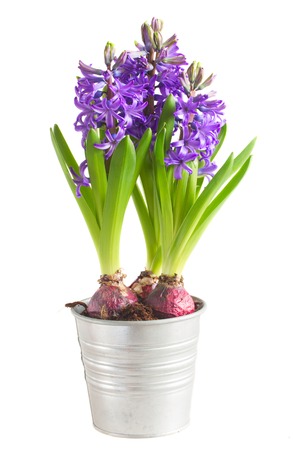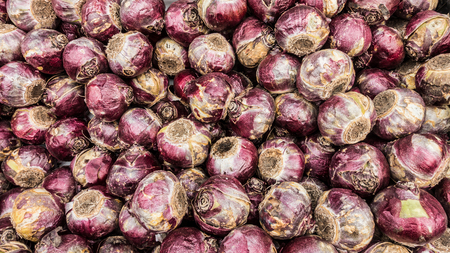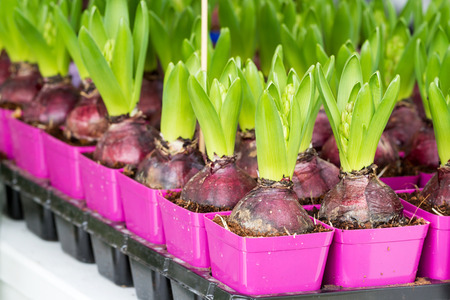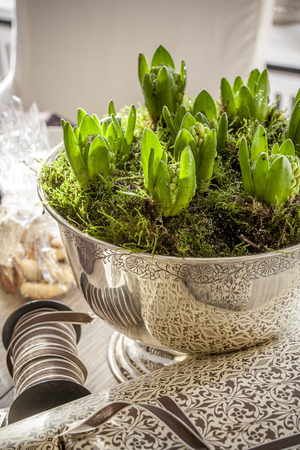The majestic flowers of Hyacinths can fill an entire room with their glorious scent. This is even more desirable when these bulbs can be made to flower during our Christmas festivities or just brightening the gloomiest winter day with the promise of spring to come.
To force Hyacinths it is essential to buy bulbs marked as prepared. These have been treated by the grower with the correct temperatures to fool the bulbs into thinking it is winter and time for them to come into growth. These prepared bulbs are also usually larger than those for garden planting.
Bulbs ready for potting
In late August or early September the bulbs should be potted. Hyacinth bulbs may irritate some peoples skin so it might be sensible to wear a pair of gloves. If planting several bulbs in a pot, plant them so they are nearly but not quite touching each other or the sides of the pot. From my experience it is best to pot them in individual pots so that, when planting into their final container later, bulbs that are at a similar stage of growth can be chosen to ensure they flower at the same time.
The pots should have drainage holes. Place the bulbs into the pots on top of a layer of moist multipurpose compost and lightly firm more compost around them so the tip of the bulb protrudes from the compost. Also leave a small gap between the compost and the top of the pot to make watering easier. Label each pot with the variety name of the bulb and lightly water with a fine rose.
The potted bulbs now need a period of coldness and darkness to initiate the flowers. There are two ways to do this. Firstly you could put the pots in a black polythene sack and place them in a cool garage or shed, occasionally checking to ensure the compost is slightly moist. I find it more successful to plunge the pots into a fairly deep tray with drainage holes on a firm base in the garden and cover with six inches or fifteen centimetres of compost. By doing this it is often easier to achieve the desired temperature of around forty-eight degrees Fahrenheit or nine degrees Celsius. Higher temperatures may lead to failure to flower. Lightly water the plants in dry spells.
After six to ten weeks inspect the bulbs. If there is one and a half to two inches or four to five centimetres of growth and roots have grown down into the pot then they can be moved inside. If this has not occurred the bulbs should be left until this has been achieved.
The plants can now be moved into a cool glasshouse, cold frame or onto a cool windowsill until flower buds are formed. Slight shade at this stage will help to avoid scorching of the vulnerable leaves.
Single pots can now be moved on into their final container. Choose bulbs of the same colour and at a similar stage of growth in one container so they flower at the same time. If potting into a container without drainage, use bulb fibre which contains charcoal as this will help keep the soil at the correct acidity.
Singularly potted bulbs
After a few weeks in cool conditions they can be moved into a warm area around sixty to seventy degrees Fahrenheit or sixteen to twenty-one degrees Celsius. This should happen no later than the first day of December. Place in a draught free light spot, but out of direct sunlight. Keep them away from artificial heat sources such as radiators and keep the compost slightly moist. Within three weeks the plants should burst into flower. Turn the bowl occasionally to make growth even and support tall stems with a split bamboo cane.
Look forward to a delightful display in the home, or why not plant several pots for the ideal Christmas gift for friends and neighbours.
After flowering, bulbs can be planted in the garden to flower in successive years at their natural flowering time.
Mark Snelling.




